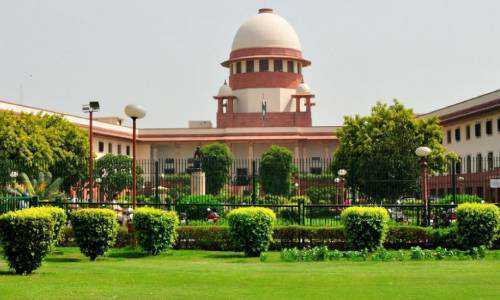
This is one of the most prominent cases decided by the Supreme Court and it dealt with the constitutional legality of the Insolvency and Bankruptcy Code, 2016's numerous provisions (hereinafter IBC Code). In order to determine the legitimacy of the current case, the Court considers numerous economic variables in the country. Many cases have been transferred from various High Courts, including Calcutta and Gujrat.
The Bankruptcy Law Reforms Committee (2016), the Joint Parliamentary Committee (2016), the Insolvency Law Committee (2018), and the Statement of Objects and Reasons were all used by the Court to make decisions in this case.
In the instant case titled Swiss Ribbons vs. Union of India, the issues raised before the Supreme Court for clarification were:
Are the provisions in the IBC constitutionally valid?
Whether the case been presented in front of the correct court?
Whether the difference between financial creditors and operational creditors is against Article 14?
With regard to the first issue, the case's appellants asserted that various provisions of the IBC Code were lawful. The appellant's first claim is that members of the National Company Law Tribunal (NCLT) and National Company Appellate Law Tribunal (NCLAT) were not appointed in accordance with the Constitution's requirements. There were two judges and three bureaucrats on the panel. The Ministry of Corporate Affairs also provides necessary administrative support (MCA). The Supreme Court cited the Companies (Amendment) Act, 2017, and stated that two judicial members and two executive members should be appointed to the NCLT and NCLAT and that the Amendment Act is lawful. Concerning the subject of the Ministry's funding for the NCLT and NCLAT.
With regard to the second issue, in the Embassy Property Development case, the Supreme Court addressed the issue of High Court jurisdiction to decide IBC proceedings, holding that the High Court can intervene in IBC cases because judicial power originates from the Constitution and NCLT/NCLAT is only a quasi-judicial body. Finally, the Supreme Court ruled in the Swiss Ribbons case in 2019 that allowing the High Court to interfere in IBC cases would open the floodgates and stymie the IBC Code's time-bound insolvency procedure. As a result, the Supreme Court dismisses the appellant's argument, holding that the NCLT/NCLAT is the adjudicating authority and that only the Supreme Court can hear an appeal.
With regard to the third issue, the Supreme Court ruled that the categorisation does not violate India's Constitution's Article 14. The Court stated that financial creditors are in a better position to judge the profitability and feasibility of a firm than corporate debtors. Financial creditors, such as banks and financial organisations, lend money, whereas operational creditors, who solely deal with goods and services and the debts associated with them, are unable to evaluate the firm.
The IBC Code has proven in tackling non-performing crises as well as continuous amendments made in the Code help in improving the ease of doing business ranking. The Court recognized that it is a beneficial piece of legislation and thus cannot be set aside. In order to reach the conclusion, the court had taken into consideration the pre-Insolvency code which fails in many aspects.

